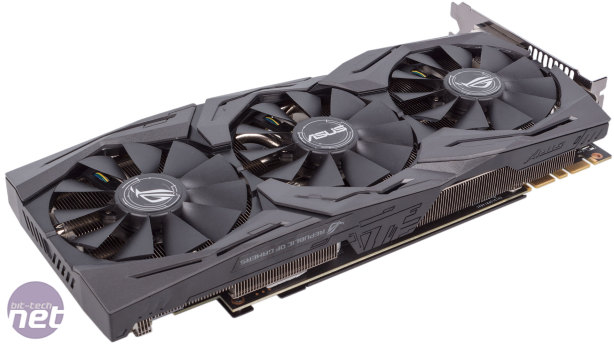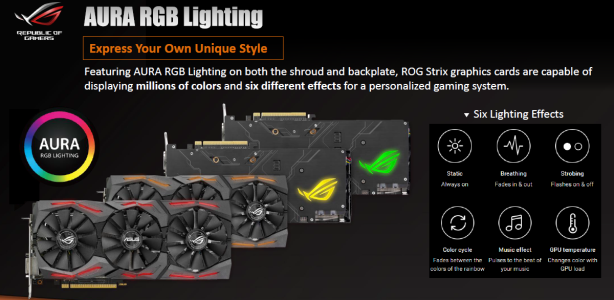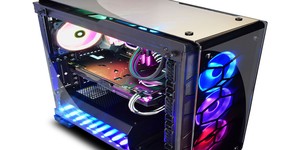Performance Analysis
Comparing this overclocked GTX 1070 to the EVGA GTX 1080 FTW (also overclocked – we're working on getting reference results into the charts) shows the latter card has a 20 percent lead on average, despite being 30 percent more expensive. This paints the GTX 1070 in a semi-decent light in terms of bang per buck – the advantage doesn't seem to be as big as it was with the GTX 970 but it will also differ based on the specific cards you choose to compare. The GTX 1080 also has a bigger lead at 4K than at 1440p, and at 1440p than at 1080p, suggesting the memory bandwidth of the GTX 1070 is bottlenecking it slightly.Nvidia says the GTX 1070 is roughly the same as a GTX 980 Ti, and our results suggest this is true. The GTX 1070 Strix is about 11 percent quicker than the previous generation card across the games, but remember it does have a 10 percent overclock applied. Overclocked GTX 980 Ti cards were often boosted by more than this, so would likely still have a small advantage over most GTX 1070s. The new architecture here does mean that the GTX 1070 extends its lead in DX12 games.
Next to the Fury X, Asus's card is 10 percent faster on average. However, AMD definitely claws back an advantage at higher resolutions and in DX12 games – looking only at the 4K tests puts this card at only 5 percent ahead, and the same is true when you average out the DX12 results. Ashes of the Singularity and Total War: Warhammer, for example, are both DX12 RTS games with lots of units to track and thus lots of draw calls and compute calculations. Although the GTX 1070 Strix is smooth in every test in these games, AMD's R9 Fury X definitely gains some ground – it has higher average frame rates in Ashes (but lower minimums) and performance is pretty much neck and neck in Total War.
Smooth gameplay is something you can definitely expect with this card – it aces virtually every game test with greater than 30fps minimums and often more than 60fps. Still, there are a couple of tests that do cripple it, which are the 4K runs of Fallout 4 and The Division, where the 'Ultra' settings are just a bit too much and the card drops below 25fps, if only briefly. We'd say your best experience with this card and a GTX 1070 generally would be at 1440p. If you want to game at 4K, the top-end cards are technically capable of delivering, but for a top-notch experience with the image dial whacked to full, it's still a dual-GPU job.
Unsurprisingly, the GTX 1070 Strix delivers well on efficiency. Our load test saw system consumption hit 340W, approximately 70W less than with a slower, reference speed GTX 980 Ti, and a saving of more than 100W compared to the R9 Fury X. The DirectCU III cooler has little issue dispensing of the heat effectively and quietly. The delta T value of 39°C isn't far off that of the water-cooled Fury X, yet the card was barely audible, with fan speeds peaking at 39 percent; just over 1,400 RPM.
Only being able to add 20MHz to the core was obviously a bit disappointing, but it's likely just a combination of bad luck in the sample lottery and the fact that Asus is already hitting pretty high boost speeds. As mentioned, when overclocked, we were at 2,025MHz when boosting, and we don't expect getting above 2,100MHz is going to be that common. Still, with the overclock applied, the power and temperature limits extended and a considerable boost to memory bandwidth with our memory overclock, we saw improvements of 5-8 percent, disregarding the minimum in Ashes of the Singularity, which didn't change.

MSI MPG Velox 100R Chassis Review
October 14 2021 | 15:04











Want to comment? Please log in.